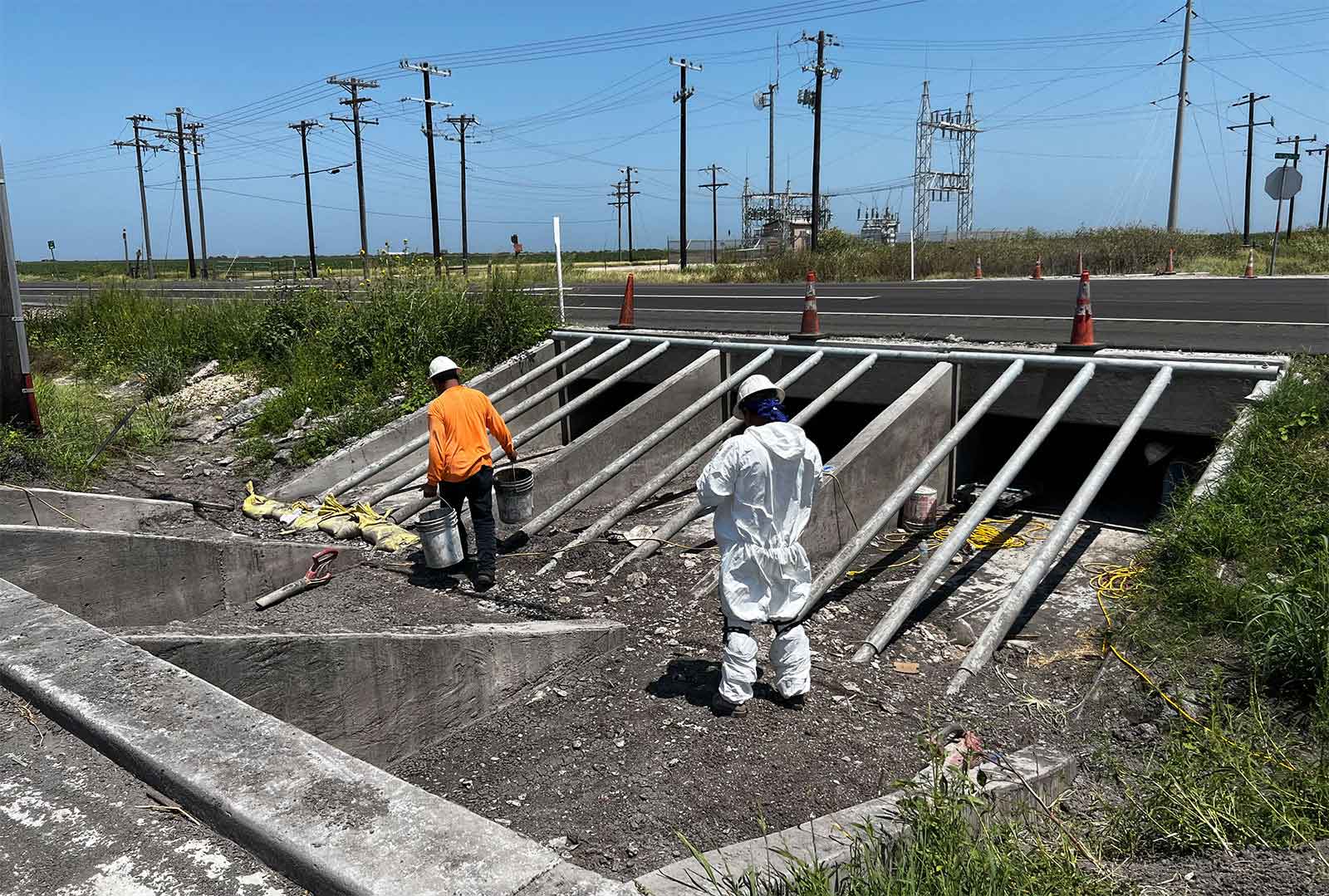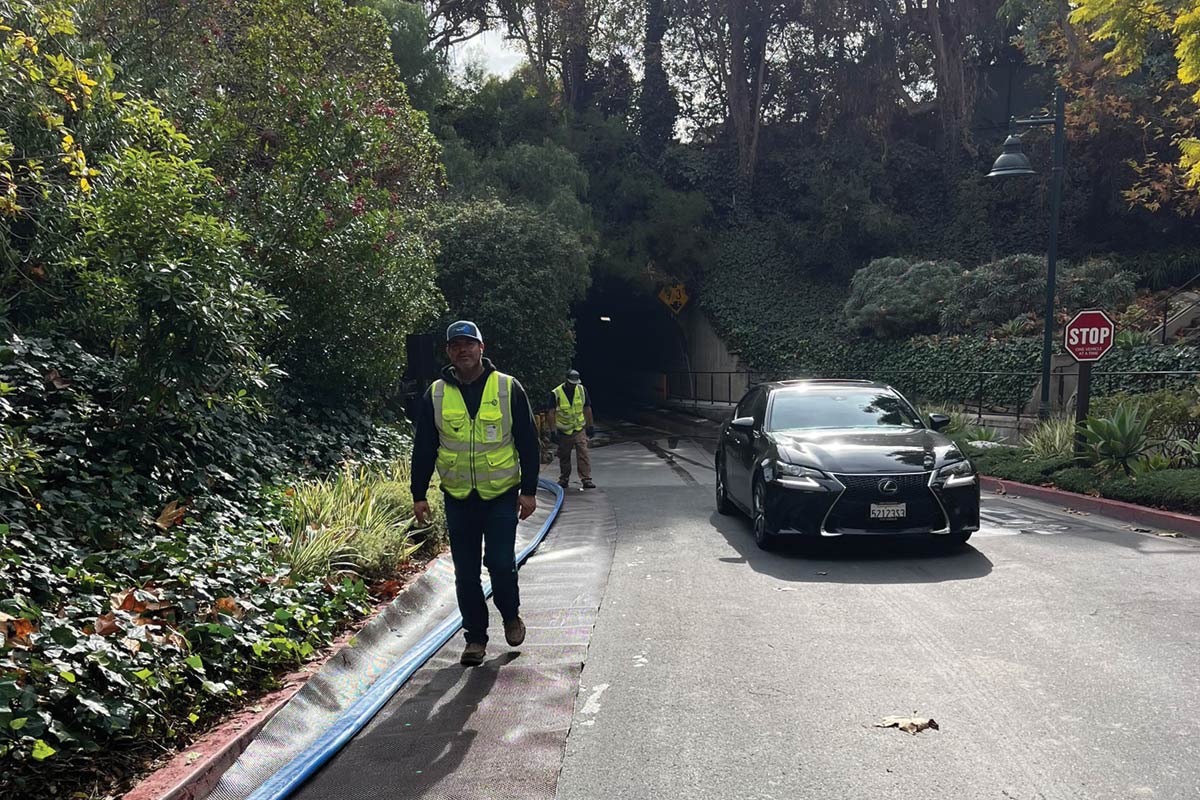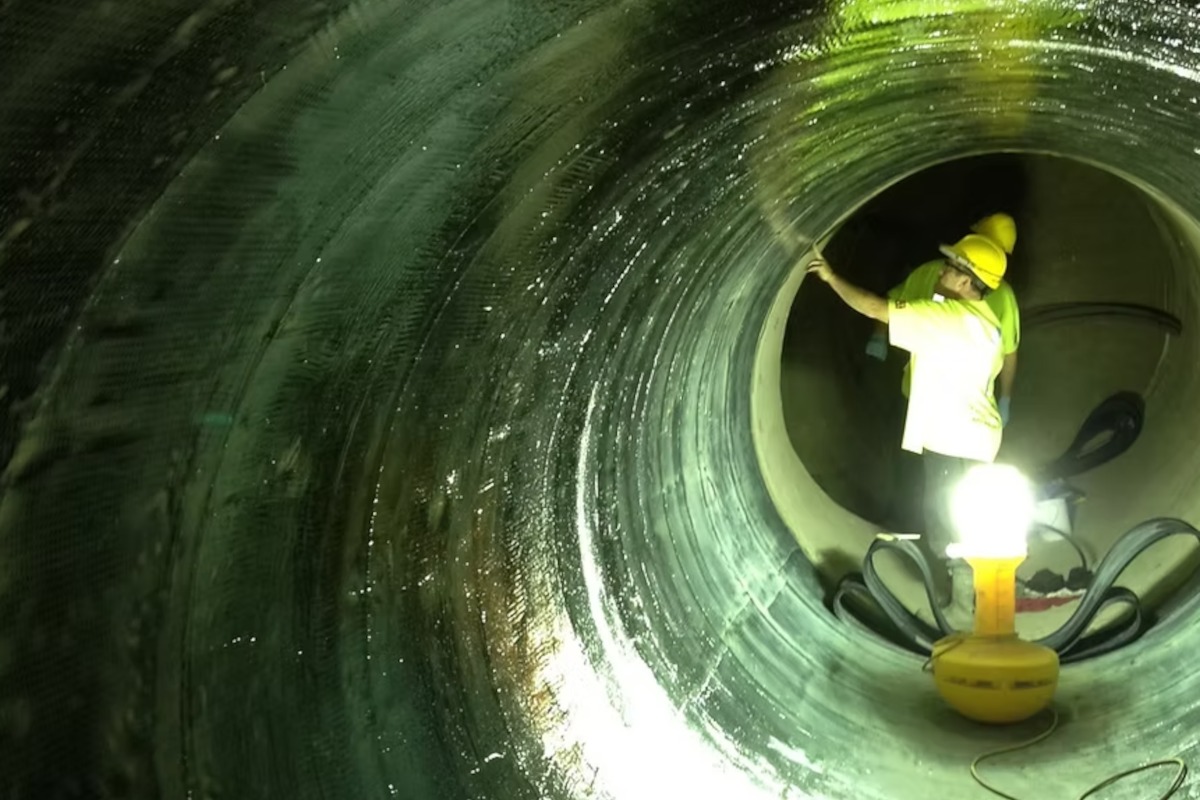
Expanding the Information Envelope on CIPP Liner Installations
February 9, 2015
 Ever since the first CIPP liner was placed into a pipeline more than 40 years ago, knowing what is in the ground years after the installation is complete has always been something of a challenge. Even in the modern world of computers there is always the potential for printed data to be lost or destroyed, by accident or purposely and for electronic data to be corrupted or lost when the unit on which it is stored fails (we all know how often systems do not get backed up correctly).
Ever since the first CIPP liner was placed into a pipeline more than 40 years ago, knowing what is in the ground years after the installation is complete has always been something of a challenge. Even in the modern world of computers there is always the potential for printed data to be lost or destroyed, by accident or purposely and for electronic data to be corrupted or lost when the unit on which it is stored fails (we all know how often systems do not get backed up correctly).The question then arises of how best to store this valuable information for access by pipeline engineers working on the lined pipe at some time now or in the future?
One solution being investigated and field tested by Hong Kong-based RJS Associates is effectively to store the information within and retrieve information from the liner itself.
Urban Detection and Management
Known as Urban Detection and Management (UDAM), this is a unique system that provides implanted data to help catalogue information of trenchless repairs and installations for the life of the installation (current design life more than 40 years). It also protects intellectual property from being copied by authenticating the materials used by original manufacturer.
The process involves implanting into the CIPP liner as it is manufactured a spread of microchips. Onto each of these chips the manufacturer’s design identification reference (ID) is stored before the liner leaves the factory. This ID can then be back-referenced to the manufacturer’s database which includes specific information relating to the manufacturing process, material used, liner thickness, date of manufacture, conformity details etc.
In this way materials can be verified on installation or at any time in the future to have come from reputable, authorized manufacturer and to comprise the correct materials, and not some unauthorized, usually substandard, material from an unknown source. In some areas of the world where there is potential for less highly rated materials to be introduced into the system, this can be very important information.
Once at site and installed, the contractor can add information relating to the asset owner, the installation contractor, times and dates of the installation and operational information for the installation process. Once installed, the information remains locked into the system for the life of the chip/liner installation and cannot be overwritten just accessed for data retrieval.
The data is termed Fixed and Variable depending on the stage at which it is input into the record.
Typical Fixed Data includes:
- Date of Manufacture
- Specification
- Conformity Certificate
- Material
- Coating
- Diameter
- Length
- Thickness
Typical Variable Data includes:
- Contractor
- Project
- Installation Process
- Location
- Coordinates
- Date Started
- Date Completed
- Engineer
Over the life of the installation this base information can become increasingly valuable as the initial installation conditions are known and can be used as a means by which any deterioration in the installation can be measured by the asset owner, anyone taking on the installation should a change of ownership take place or any regulatory or governing body of the industry in question.
The microchips used for UDAM operation are designed to withstand the rugged and harsh environments inside

Data retrieved to cross-check records. This can then be retrieved at any time in the future using the data probe.
pipes, as well as those experienced during liner installation operations, which cover most, if not all, of the widely accepted installation techniques including UV cure, Steam cure as well as hot water cure and ambient cure.
Once installation is completed, the lined pipe is scanned using a UDAM scanner, much in the same way as a CCTV unit would be passed through the pipe, to record the chip data. This data is then be compared with the manufacturer data provided to ensure they correspond and that the liner installed is in fact the one provided from the factory and not a substitute material.
The next step in the process has been to develop the microchips to carry not just the registered ID but to actually imprint both the manufacturer’s data and the asset owner/contractor data onto the chip. In 2014, the first steps toward this aim were completed with the ability to write data to the chips having been achieved. Currently, tests are planned to ensure that these chips will withstand the rigors of transport and installation and that data can thereafter be successfully retrieved. This testing is expected to take place during 2015.
By whichever means, with manufacturer’s data and installation data available immediately to the asset owner, this means that the potential for loss of vital pipeline information is minimized, if not negated completely, as the data remains in place to access at any time over the life of the pipeline, provided the scanner and UDAM software are maintained. It also means that the level of confidence in the installation for the client is maximized once the manufacturing data has been confirmed post installation.
Advantages
One main advantage of using a system like UDAM is that the potential for rouge installations by less scrupulous contractors looking to short-cut installations times and minimize costs by offering one type of material and installing another, often cheaper, version can be virtually eliminated from the lining process because of the data verification processes involved.
Furthermore, as staff change over the years or ownership of the asset moves between companies or government departments, the knowledge of what has been installed, when the work was done, by whom and how it was completed does not get lost in the way that it often does at present. This knowledge is invaluable to engineers both today and in the future. UDAM offers the means to keep this information fresh and constantly available as and when required for simple system analysis or future planning programmes.
RJS Associates is owned and operated by Robert Swift, who has a background in utility systems through his earlier years in the United Kingdom. Now working out of Hong Kong, RJS is seeking partners worldwide to establish and field test the UDAM system across a wide variety of installation scenarios. Interested parties should contact Robert Swift on email: rob@rjsasia.com.
This article was provided RJS Associates Ltd., Shatin, NT, Hong Kong.







